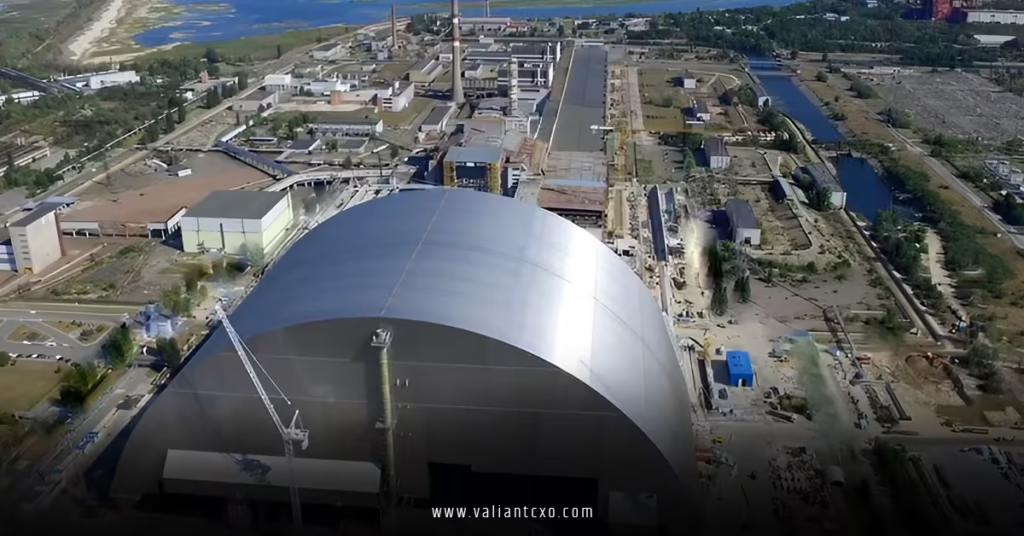Chernobyl Nuclear Power Plant stands as a haunting reminder of what happens when human ambition clashes with the unforgiving forces of nuclear energy. You know, it’s one of those places that pops up in history books, documentaries, and even video games, but have you ever dug deep into its story? Let’s chat about it like we’re sitting over coffee, breaking down the twists and turns without all the jargon that makes your eyes glaze over.
Imagine a massive facility built in the heart of Ukraine, designed to power homes and industries with the promise of endless energy. The Chernobyl Nuclear Power Plant wasn’t just any power station—it was a symbol of Soviet innovation back in the day. But things went horribly wrong, turning it into the site of the world’s worst nuclear disaster. In this article, we’ll explore its origins, the fateful explosion, the long shadow it cast on health and the environment, and what’s happening there today. Stick with me, and you’ll walk away with a clearer picture of why the Chernobyl Nuclear Power Plant still matters in our world.
The Origins of Chernobyl Nuclear Power Plant
Let’s rewind to the 1970s, shall we? The Soviet Union was all about pushing boundaries in nuclear technology, and the Chernobyl Nuclear Power Plant was a key player in that game. Construction kicked off in 1972 near the town of Pripyat, about 100 kilometers north of Kyiv. Why there? Well, it was close to the Pripyat River for cooling water, and the area had plenty of space for what they hoped would be the biggest nuclear setup on the planet.
The plant featured four RBMK-1000 reactors—big, graphite-moderated beasts that could each churn out 1,000 megawatts of electricity. Think of them as giant kettles boiling water to spin turbines, but with uranium fuel rods doing the heating. Reactor No. 1 went online in 1977, followed by the others in quick succession: No. 2 in 1978, No. 3 in 1981, and No. 4 in 1983. At its peak, the Chernobyl Nuclear Power Plant supplied around 10% of Ukraine’s electricity, powering millions of lives.
But here’s where it gets interesting— or should I say, concerning? The RBMK design had some quirks. Unlike Western reactors with sturdy containment domes, these relied on graphite to moderate neutrons, which could lead to instability if things heated up too much. It was like driving a sports car without proper brakes; thrilling until it wasn’t. Engineers back then thought they had it under control, but as we’ll see, that confidence was misplaced.
Planning and Building the Chernobyl Nuclear Power Plant
Diving deeper, the planning for Chernobyl Nuclear Power Plant started as early as 1966. The Soviets wanted to ramp up nuclear power to meet growing energy demands, and this site was chosen for its strategic location. Construction crews poured in, building not just the reactors but an entire city—Pripyat—for the workers and their families. Picture a bustling town with schools, hospitals, and even an amusement park, all orbiting around the Chernobyl Nuclear Power Plant.
By the mid-1980s, plans were afoot for reactors 5 and 6, but fate had other ideas. The build quality? Solid in parts, but reports from the era hint at rushed work and corners cut to meet quotas. It’s like baking a cake under a tight deadline—you might end up with a lopsided mess. Despite these red flags, the plant hummed along, representing the pinnacle of Soviet engineering… until it didn’t.
The Catastrophic Disaster at Chernobyl Nuclear Power Plant
Okay, let’s tackle the elephant in the room: the 1986 explosion at Chernobyl Nuclear Power Plant. It was April 26, a night that changed everything. Operators were running a safety test on reactor No. 4—ironic, right? They wanted to see if the turbines could keep the cooling pumps going during a power loss. Sounds straightforward, but a mix of design flaws and human error turned it into a nightmare.
Picture this: The reactor’s power dipped too low, xenon built up (a neutron absorber, like sand in your engine), and when they tried to ramp it back up, boom—a power surge. The control rods, meant to shut things down, actually spiked the reaction because of their graphite tips. It’s like pressing the brake and accelerating at the same time. Two explosions ripped the roof off, spewing radioactive material into the sky.
The immediate toll? Two workers died from the blasts, and 28 more succumbed to acute radiation sickness in the weeks that followed. Firefighters rushed in, unaware of the invisible danger, hosing down flames while absorbing lethal doses. The Chernobyl Nuclear Power Plant became a radioactive inferno, with graphite fires raging for days.
What Caused the Explosion at Chernobyl Nuclear Power Plant?
Breaking it down, the root causes were multifaceted. First, that RBMK design had a “positive void coefficient”—fancy talk for saying steam bubbles made the reaction speed up, not slow down. Add in operators disabling safety systems to complete the test, and you have a recipe for disaster. It wasn’t just one mistake; it was a chain reaction, pun intended.
Rhetorical question: Could this have been prevented? Absolutely, with better training and design tweaks. But in the high-pressure Soviet system, pushing limits was the norm. The Chernobyl Nuclear Power Plant accident exposed these flaws on a global stage, forcing the world to rethink nuclear safety.
Immediate Aftermath of the Chernobyl Nuclear Power Plant Disaster
In the chaos following the explosion, the Soviet government dragged its feet on evacuations. Pripyat’s 50,000 residents weren’t told until 36 hours later, thinking it was just a minor fire. Imagine packing up your life while radiation rains down—terrifying. They left behind pets, homes, everything, creating a ghost town frozen in time.
The exclusion zone, a 30-kilometer radius around Chernobyl Nuclear Power Plant, was established, displacing over 350,000 people. Cleanup crews, called “liquidators,” numbering around 600,000, swarmed in. They buried contaminated soil, slaughtered irradiated animals, and built a hasty sarcophagus over reactor 4—a concrete tomb to contain the mess. These heroes faced health risks we can only imagine, like knights charging into a dragon’s lair without proper armor.
Environmentally, the fallout spread far. Winds carried radioactive particles across Europe, contaminating farmland in Belarus, Russia, and beyond. Lakes turned toxic, forests absorbed cesium-137, and wildlife mutated in subtle ways. It’s like dropping ink in water; it spreads everywhere.
Health Impacts from Chernobyl Nuclear Power Plant Radiation
Fast-forward to health effects, and it’s a mixed bag. Acute radiation hit hard initially, but long-term? Thyroid cancer spiked in kids exposed to iodine-131, with thousands of cases linked to the Chernobyl Nuclear Power Plant disaster. We’re talking about 5,000 attributable cases, though survival rates are high with treatment.
Other cancers? Studies show no clear uptick in leukemia or solid tumors beyond thyroid issues. Psychological trauma, however—depression, anxiety—plagued survivors. It’s the invisible scar, like a shadow that follows you. Credible sources, like the UN’s scientific committee, estimate up to 4,000 excess cancer deaths over time, but that’s debated. As someone who’s pored over these reports, I can tell you: The human cost of Chernobyl Nuclear Power Plant is immeasurable.

Long-Term Consequences and Recovery Efforts at Chernobyl Nuclear Power Plant
Decades later, the Chernobyl Nuclear Power Plant’s legacy lingers. Reactors 1, 2, and 3 kept running post-disaster—crazy, right? No. 2 shut in 1991 after a fire, No. 1 in 1996 under international pressure, and No. 3 in 2000, ending power generation. Decommissioning kicked off in 2015, a slow process involving fuel removal and site cleanup, slated to wrap by 2065.
The star of recovery? The New Safe Confinement, a massive steel arch slid over the old sarcophagus in 2017. Funded by global donors, it’s like a giant shield, allowing safe dismantling inside. Cost? Over 2 billion euros. It protects against leaks for a century, buying time for future tech to handle the radioactive core.
The exclusion zone? It’s evolving into a wildlife haven. Without humans, animals thrive—wolves, bison, even rare birds. Radiation levels have dropped, but hot spots remain. Tourism boomed pre-pandemic, with guided tours letting you peek at the Chernobyl Nuclear Power Plant from afar. It’s eerie, like stepping into a post-apocalyptic movie set.
Environmental Recovery Around Chernobyl Nuclear Power Plant
Nature’s resilience shines here. Forests have reclaimed Pripyat, and studies show mammal populations booming despite radiation. It’s a metaphor for hope: Even after catastrophe, life finds a way. But challenges persist—wildfires in 2020 stirred up contaminants, reminding us the Chernobyl Nuclear Power Plant’s threat isn’t fully buried.
Water bodies? The Pripyat River and nearby lakes still carry traces, but filtration systems help. International efforts monitor this, ensuring no major spread. If you’re eco-curious, think of it as Earth’s scar tissue healing slowly.
Current Status of Chernobyl Nuclear Power Plant in 2025
As of October 2025, the Chernobyl Nuclear Power Plant is deep in decommissioning. A workforce of thousands manages the site, handling spent fuel and waste. The Interim Storage Facility 2, built by an American firm, stores old fuel assemblies safely for 100 years.
But war adds drama. Russian forces occupied the plant in 2022, causing power outages and radiation spikes from disturbed soil. Fast-forward to now: Drone strikes in early 2025 damaged the New Safe Confinement, though radiation stayed stable. Ukrainian President Zelenskyy warns of risks from ongoing conflict, with blackouts threatening safety systems. It’s like playing with fire near a powder keg—unsettling.
The State Agency of Ukraine on Exclusion Zone Management oversees it all, focusing on safety and research. Visits are possible but regulated; no wandering alone. The Chernobyl Nuclear Power Plant remains a cautionary tale, but also a lab for nuclear science.
Ongoing Challenges at Chernobyl Nuclear Power Plant
Power grid attacks from the Russia-Ukraine war pose fresh threats. Imagine losing electricity to cooling pools—disaster waiting. Engineers race to fortify, but it’s tense. Health monitoring continues, with no new cancer waves, but vigilance is key. The Chernobyl Nuclear Power Plant teaches us: Nuclear power demands respect.
Lessons Learned from Chernobyl Nuclear Power Plant
What did we gain from this tragedy? A ton. Global nuclear safety revamped—better designs, rigorous training, international oversight. The IAEA stepped up, creating conventions for quick accident reporting. RBMK reactors elsewhere got upgrades, making repeats unlikely.
It’s like a wake-up call: Don’t skimp on safety. Today, plants have multiple redundancies, like backup generators galore. The Chernobyl Nuclear Power Plant spurred WANO, linking operators worldwide for best practices. If you’re in the industry or just curious, these changes saved lives.
Global Impact on Nuclear Policy from Chernobyl Nuclear Power Plant
Countries paused new builds, but nuclear persists. Renewed interest now with climate change—clean energy, anyone? The Chernobyl Nuclear Power Plant reminds us to balance progress with caution. Analogies aside, it’s shaped how we view tech’s double edge.
Conclusion: Reflecting on Chernobyl Nuclear Power Plant’s Enduring Message
Wrapping up, the Chernobyl Nuclear Power Plant story is one of triumph, tragedy, and tenacity. From its ambitious start to the 1986 disaster that claimed lives and scarred landscapes, to today’s decommissioning amid war’s shadows—it’s a rollercoaster. We’ve seen health tolls, environmental rebounds, and global lessons that make nuclear safer. Don’t let this fade into history; learn from it. Visit virtually, read up, and advocate for responsible energy. The Chernobyl Nuclear Power Plant urges us: Harness power wisely, or pay the price. What’s your takeaway? Let’s keep the conversation going for a safer tomorrow.
FAQs
What exactly happened at the Chernobyl Nuclear Power Plant in 1986?
The Chernobyl Nuclear Power Plant experienced a massive explosion in reactor No. 4 during a flawed safety test, releasing radiation due to design issues and operator errors.
Is the Chernobyl Nuclear Power Plant still operational today?
No, the Chernobyl Nuclear Power Plant stopped generating power in 2000 and is now in decommissioning, with ongoing management of waste and safety.
How has the environment around Chernobyl Nuclear Power Plant recovered?
Wildlife has flourished in the exclusion zone around Chernobyl Nuclear Power Plant, though radiation hotspots persist, showing nature’s surprising adaptability.
What are the health effects linked to the Chernobyl Nuclear Power Plant disaster?
Mainly thyroid cancers in exposed children, with acute radiation sickness claiming early lives, but no widespread increase in other cancers from Chernobyl Nuclear Power Plant fallout.
Can people visit the Chernobyl Nuclear Power Plant site safely?
Yes, guided tours allow limited access to areas near Chernobyl Nuclear Power Plant, with radiation monitoring to ensure safety for short visits.
Read More:valiantcxo.com


